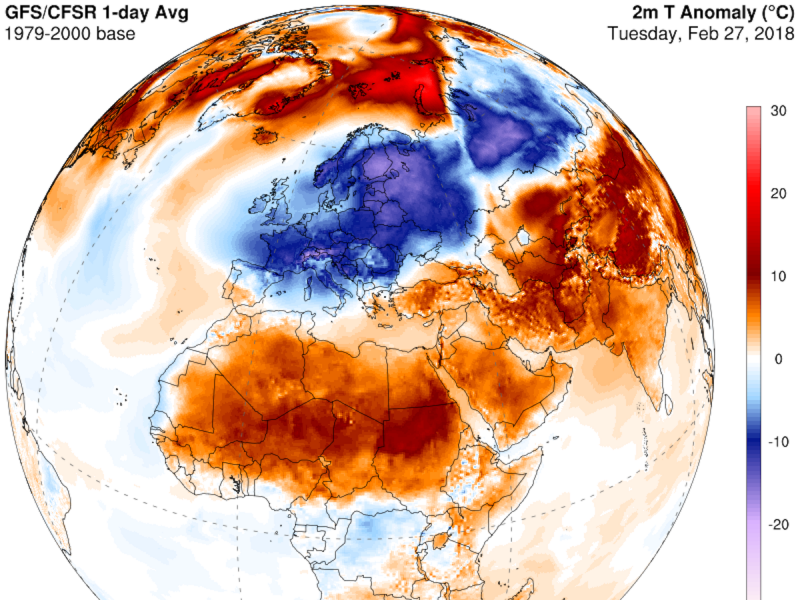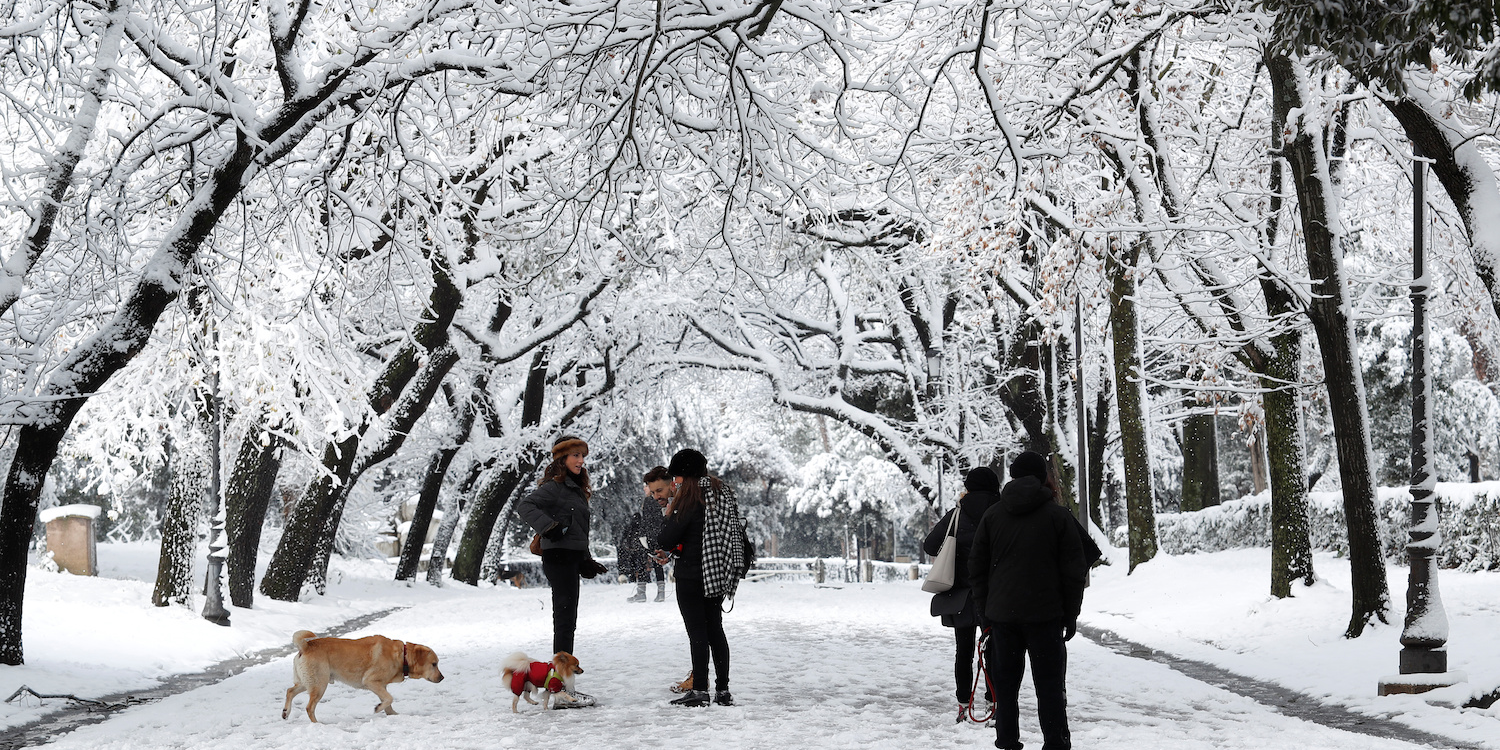- European countries have been gripped with extremely cold weather this week.
- The cause is a blast of frigid air from the northeast.
- It is part of a wider phenomenon linked to weather in the Arctic, which is weirdly warm this year.
- The warmth around the North Pole has allowed Arctic air to surge south, causing freezing temperatures and snow as far south as Rome.
Europe is in the grip of a cold snap, which has sent temperatures plunging below their usual late-February levels, and sparked heavy snow showers in unusually southerly spots like Rome.
The frigid temperatures, according to weather scientists, are actually the result of unseasonably warm weather elsewhere, which helped set the conditions for Europe’s cold.
An Arctic blast from Eurasia – dubbed the “Beast from the East” – is currently plunging England and Wales into its coldest weather in 27 years, the UK Met Office said. Rome was hit by a rare snow storm over the weekend.
According to The Guardian, at least three people have died from the cold weather in Lithuania, where temperatures are as low as -15 degrees Celsius (5 degrees Fahrenheit).

The reason behind this phenomenon is the unusually warm weather over the Arctic this year, scientists say.
Temperatures in the region are around -8 Celsius (17.6 Fahrenheit). That sounds cold, but it's around 20 Celsius (36 Fahrenheit) higher than the average this time of year, Reuters reported.
This graph shows the unusually warm weather over the Arctic this year:
Drastic Arctic warm event stuns scientists, as record-breaking temperatures reach the North Pole https://t.co/O1TLwcnROS cc @ruth_mottram @ZLabe @seaice_de [📷 from ZLabe]. pic.twitter.com/Yh5Jy74Kwn
— Andrew Freedman (@afreedma) February 26, 2018
As a result, sea ice in the region is at a record low. The warmer environment this creates allows cold air from the north to stream south across Russia, Scandinavia, and over the European mainland.
The Arctic blast across Europe is partially due to a split in the polar vortex, a low-pressure zone near the North Pole that keeps cold air in polar region separate from areas further south.
As Mashable put it: "It's as if someone opened the planet's refrigerator door, causing the cold air to drain out of the normally frigid region, bringing cold to the Western US and Eurasia but leaving the air within the fridge itself unusually warm."
Lars Kaleschke, a sea ice professor at the University of Hamburg, noted the existence of open water above Greenland, where the thickest sea ice of the Arctic should be.
He said: "It is not refreezing quickly because air temperatures are above zero [...] Wacky weather continues with scary strength and persistence."
There is open water north of #Greenland where the thickest sea ice of the #Arctic used to be. It is not refreezing quickly because air temperatures are above zero confirmed by @dmidk's weather station #KapMorrisJesup. Wacky weather continues with scary strength and persistence. pic.twitter.com/YMnvCD8XvL
— 🐘🟦 Lars Kaleschke (@seaice_de) February 25, 2018
Professor Kaleschke told Reuters: "The question is whether this weather will happen more often. This is just one event so it's hard to make a causal relationship."

